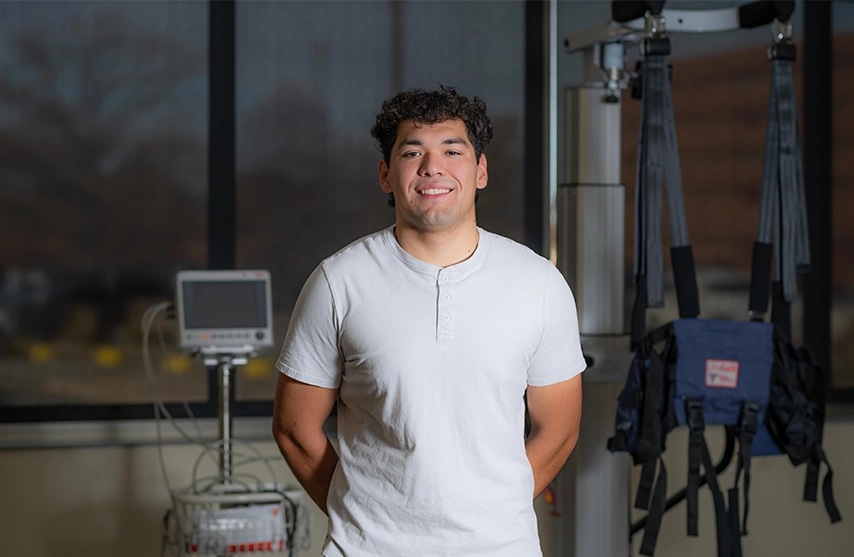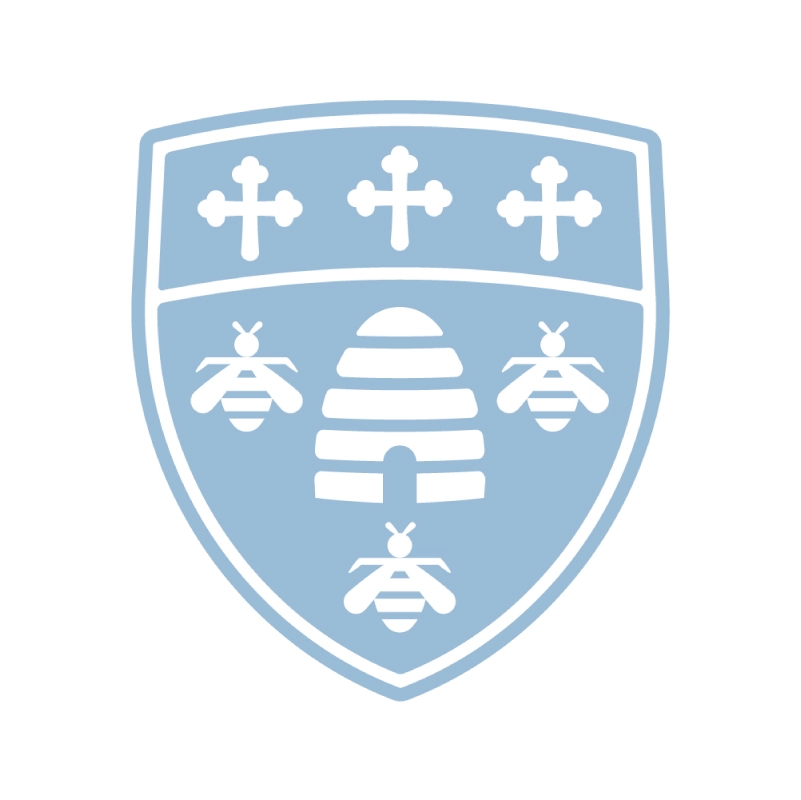When Oscar Mejia ’27 DPT started college, he knew he loved movement. A lifelong soccer player and kinesiology student, he always felt drawn to helping people improve their physical health. But it wasn’t until he discovered the connection between exercise, healing, and patient care that he realized physical therapy was the right path for him.
“I've always loved being physically active,” Mejia said. “Combining that with the ability to help people get better through physical activity and exercise was something that definitely made me want to pursue the profession.”
Today, Mejia is carving out a unique place in St. Ambrose’s physical therapy program as the first accelerated pathway student to enroll through the new articulation agreement with Loras College. And while the accelerated path has challenged him, it has also confirmed that he’s exactly where he’s meant to be.
Taking the fast track to PT school
Mejia first learned about the Loras–St. Ambrose partnership during his first year in college, when one of his former soccer coaches showed him a press release announcing the agreement.
“At this point, I was very interested in physical therapy,” he said. “I had started taking some of the prerequisites already, and I thought this would be a really cool opportunity.”
After reviewing the three-year academic plan with his advisor, he decided to commit to the accelerated path – compressing four years of coursework into three and applying to PT school a full year earlier than most students.
The benefits were clear from the start.
“It allows me to immediately apply the skills I learned in my undergraduate years,” Mejia said.
A rewarding transition
Stepping into the DPT program meant stepping into a new rhythm – one that Mejia embraced with excitement. The shift from undergraduate coursework to graduate-level expectations was immediate, but he welcomed the challenge.
“A lot of people use the terminology of drinking water from a fire hose,” he said. “There’s just so much more than undergrad without a doubt.”
The fast-paced environment, longer labs, and full academic weeks encouraged him to grow quickly as a learner. Instead of feeling overwhelmed, he found himself energized by the momentum.
“It was challenging at first, but I’ve gotten used to it along the way,” he said. “Overall, it’s been very enjoyable, and I’ve been very grateful for the opportunity.”
Learning by doing
One of the things that impressed Mejia most about the St. Ambrose program was how quickly students begin hands-on learning.
“It’s very application-based,” he said. “The first week of classes, we were working on evaluations, muscle testing, and analyzing movements right off the bat.”
His favorite experience so far has been the Physical Therapy Procedures course, which exposed him to inpatient care – a setting he hopes to work in one day.
“That class specifically taught me pretty much everything I would need to know for a hospital rotation,” he said. “We were in the hospital probably three times during the semester already.”
Gross anatomy and biomechanics also stood out as foundational courses that gave him a deeper understanding of the human body and its movement.
Support from faculty who care
A hallmark of the program, Mejia said, is the feeling of belonging.
“Every single professor cares about us as students but also as people,” he said. “Every single faculty member is very approachable.”
Whether he’s asking a question after class, seeking advice, or simply chatting about life, he said the open-door culture makes a significant difference.
“They’re not only here to teach,” he said. “They're here to teach us about life and how we're going to apply what we're learning in our careers.”
Strength in community
Mejia describes his cohort – and the second-year students – as tight-knit and supportive.
“It’s not a competition,” he said. “We've all made it here, and we all have the ability to help each other.”
From group study sessions to volunteering as patient models for each other’s practical exams, students consistently show up for one another.
“Everyone gets along,” he said. “You see second-year students talking to professors, making jokes, everyone is very tight, and I've really enjoyed being a part of it.”
Finding confidence and purpose
One of the defining moments in Mejia’s journey so far came during his first major practical exam. Simulating a hospital evaluation, he walked into the room nervous – but left with new assurance.
“My instructor told me that she loves the way that I interact with patients,” he said. “She thinks that I'm going to be a great and empathetic physical therapist one day.”
That affirmation stayed with him. “When classes get difficult or life gets stressful, it’s very refreshing to have that reassurance,” he said.
Serving with empathy and representation
Mejia hopes to work in a hospital after graduation, helping patients through some of their most vulnerable moments.
“I want to be someone who looks at the patient as a person,” he said. “Someone who can help them go back to normal life and be a healthier person.”
As a first-generation college student and a fluent Spanish speaker, he also sees an opportunity to expand representation within the field.
“There has been a lack of bilingual physical therapists,” he said. “I’d like to go out and speak to Hispanic communities about health care fields and help patients of all backgrounds.”
His motivation comes from the example set by his parents, who immigrated from Mexico and instilled a deep sense of gratitude and determination.
“The ability to be in the position I'm in today and to have an impact on the world is what I'm very grateful for,” he said.
Start Your Journey in Physical Therapy
Inspired by Mejia’s story? Apply to the St. Ambrose University Doctor of Physical Therapy program and begin your own path toward becoming a compassionate, patient-centered healthcare leader.



